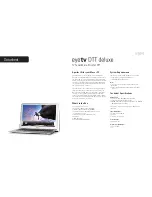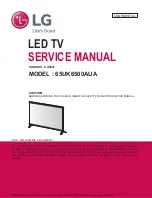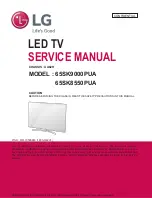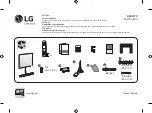
33
Stereo reproduction normally uses left and right speakers, but Digital Theater Systems (DTS), Dolby Digital and Dolby Pro
Logic Surround go further, adding a centre and other channels so you are immersed in sound and special effects.
Digital Theater Systems (DTS) / Dolby Digital
Both DTS and Dolby Digital split soundtrack information into 6
separatechannelsofsoundwhichareoutputthroughthespeaker
setup: five full range channels (left, centre, right, stereo left and
right surround) and a ’0.1’ (ie: limited range) bass channel. This
gives you superb sound quality from DTS / Dolby Digital encoded
tracks when a compatible speaker system is connected to your
TV.
Most dialogue comes from the centre channel, which enhances
dialogue and focuses it so it seems to come from the action on
screen. The separate rear left and right channels give a dramatic
sense of space, with sounds travelling in all directions between
front, centre and rear channel speakers (eg: a rocket going
overhead starts behind you to the left and explodes in front of you
to the right). The ’0.1’ LowFrequency Effects (LFE) channel gives
impact to bass sounds and to special effects more felt than heard
(eg: the thud of a dinosaur footfall or the rumble of thunder).
While DTS and Dolby Digital are both high quality, ’5.1’ channel
surround systems, the two systems differ in how they break down
and store sound information.
They also differ in how they work with existing speaker setups:
Dolby Digital has been developed to be backwardly compatible
withDolbyProLogicandconventionalstereo setups.DTS, onthe
other hand, focuses on the high quality, 5.1 channel surround
output; choosing not to develop backward compatibility with
existing sound systems.
Note:
D
External equipment is usually connected to the TV via one of
the Scart sockets to provide pictures and sound (eg: a VCR
player connected to AV2). To receive a DTS or Dolby Digital
encoded soundtrack from compatible equipment (eg: a DVD
player, a set top box), you will also need to connect an optical
or coaxial cable to one of the TV’s digital audio sockets. See
pages 36 to 37 for connection details, also see the
Digital
Audio option in the SOUND menu, page 15.
Dolby Pro Logic
DolbyProLogicSurrounduses fourchannels ofsound: left,right,
centre and a mono rear channel, giving excellent reproduction of
Pro Logic encoded tracks when a compatible speaker system is
connected to your TV. Most dialogue comes from the centre
channel, which enhances dialogue and focuses it so it seems to
come from the action on screen. The rear channel is used to
immerse you in atmosphere and special effects, the same output
is sent to both rear speakers.
As with Dolby Digital, Pro Logic is backwardly compatible with a
conventional stereo speaker setup.
Notes:
D
To get Pro Logic information from Pro Logic encoded TV
programmes, you must be able to receive stereo
transmissions. If stereo transmissions are not transmitted in
yourareathentheProLogicinformationwillnotbepresenton
TV transmissions and Pro Logic decoding will only produce a
centre channel output.
D
See pages 36 to 37 for connection details.
Surround sound systems
Centre speaker
Centre speaker
Subwoofer /
LFE speaker
Rear right
surround
speaker
Rear left
surround
speaker
Front
right
speaker
Front
left
speaker
Rear right
surround
speaker
Rear left
surround
speaker
Front
right
speaker
Front
left
speaker
Содержание TX-36PB50
Страница 1: ...TQB8E3511 1 Operating Instructions TX 36PB50 Colour Television U K Standard ...
Страница 43: ...43 Notes ...












































